Want to launch an NFT? Looking for a clear guide to building a project from start to finish?
In this article, you'll learn the core elements of the best NFT launches including some useful tools to get your project off the ground.
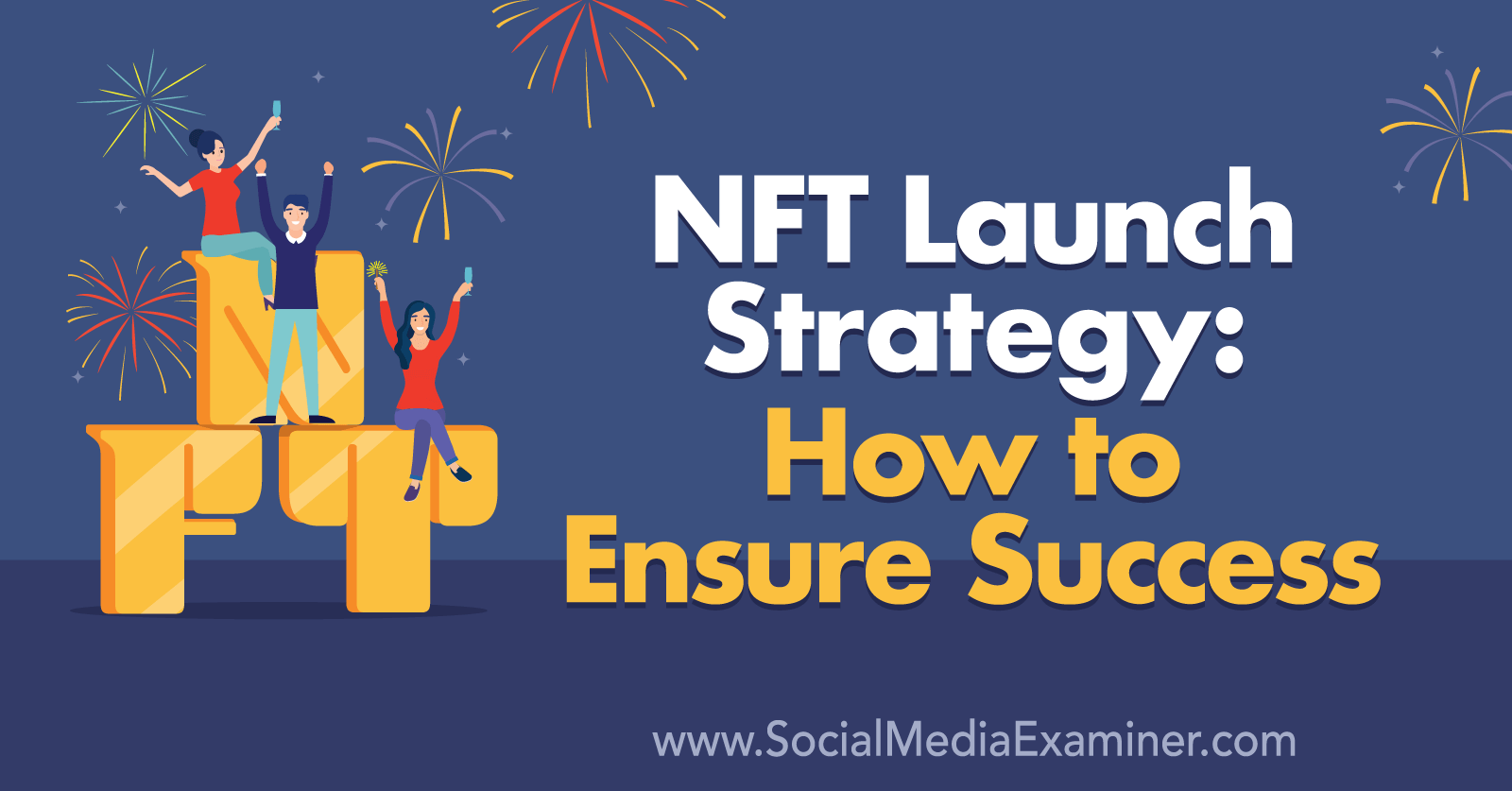
NFTs Are the Ultimate Loyalty Program
If you're already running a successful business, you may be wondering why you'd want to get into the NFT space. The reality is that you ultimately may not have much choice. Web3 is on the way, and in many ways, it's already here. NFTs are one part of Web3.
So let's take a moment to talk about what Web3 is. With Web 1.0, the initial phase of the internet, people could read the information online. It was literally called the information superhighway. There was a little interaction, some ads, and if you were savvy with a search engine, you could find what you were looking for. But that was about it.
The next phase of the internet, Web 2.0, is the phase we're in now. It's much more interactive and people are doing more than just reading content—they're creating the content. But they're making more money for the platforms they're creating that content on than for themselves.
With Web3, content creators will own and monetize their own content. Essentially, we're moving away from using someone else's platform to build a presence to owning our presence online and taking charge of it.
In addition to blazing the trail of Web3 and the metaverse within the NFT space, businesses and creators can take advantage of the potential of NFTs to build a more loyal community than ever before. Because NFTs grant ownership to community members, those people are much more likely to evangelize and advocate for that business or creator.
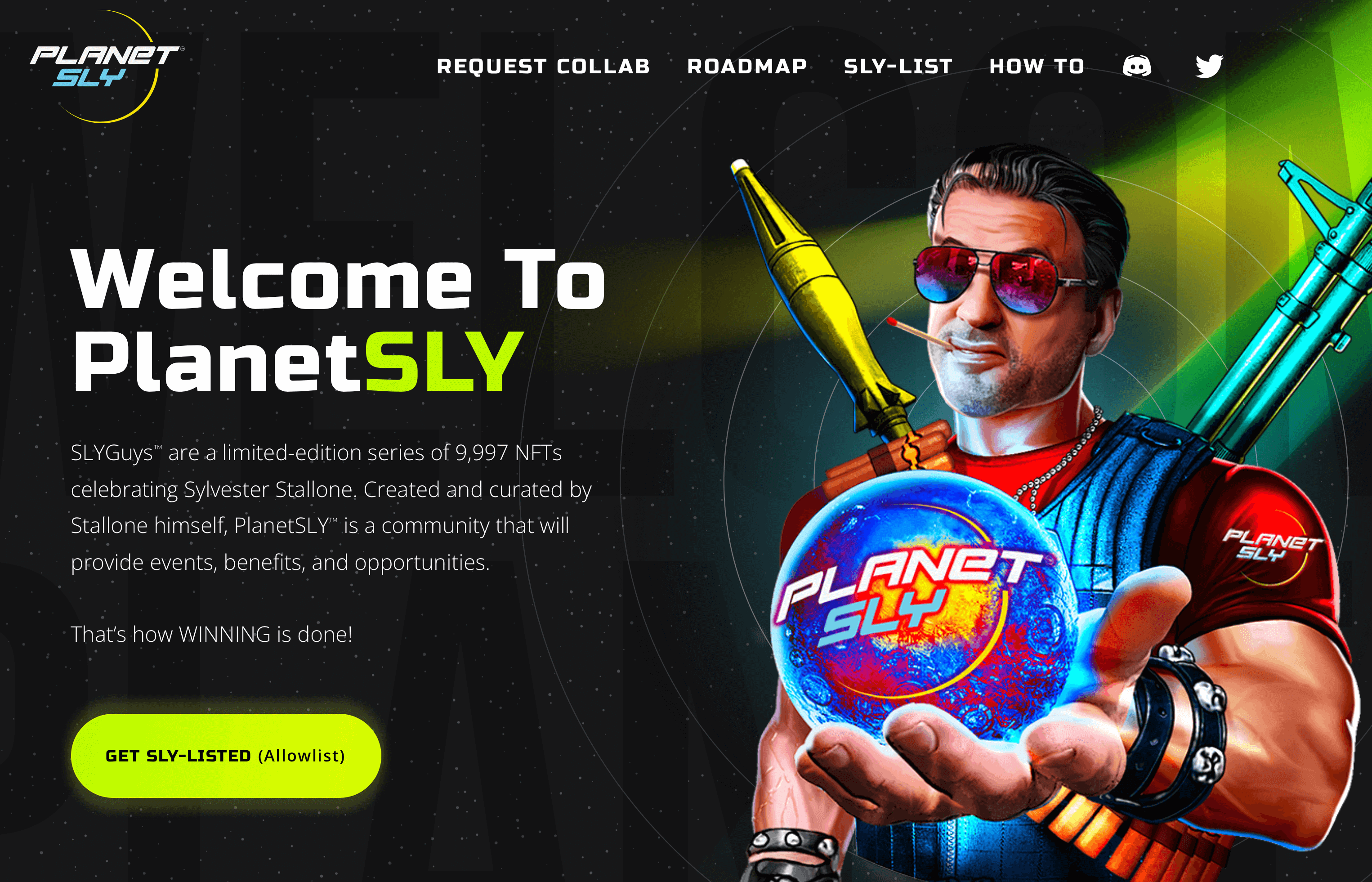
When someone owns their membership within a community, they attach a sense of value to that membership and become more emotionally and psychologically invested in the community. This is something that can't be done in the same way on social media or Web 2.0.
If you're interested in developing an NFT project for your business, here are six critical elements to making your project a success.
#1: Design Art That Will Appeal to Your Target Audience
When people are deciding whether to invest in an NFT project, the art is an important consideration. Your NFT project's art needs to appeal to your target market. If you don't put the time and effort into designing the right imagery, then consumers won't be interested in buying into it.
For Sylvester Stallone's SLYGuys NFT project, which Joel is involved with, the art is inspired by the actor's movie roles. In the vast majority of his films, he's an action hero, guns a' blazing, so that's what the art is inspired by and what will appeal to his fans.
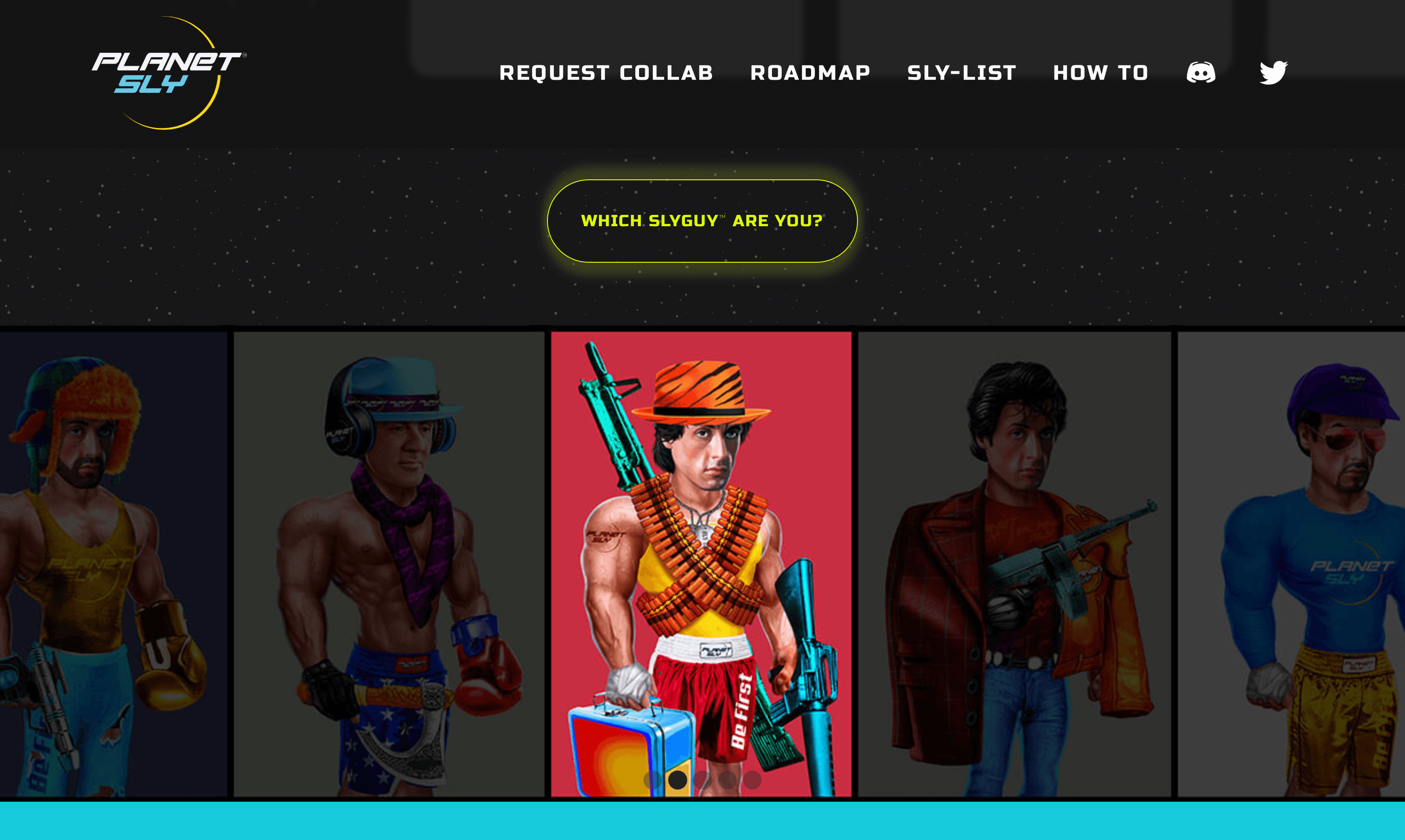
Releasing your art ahead of time is an important way to build excitement for your launch. While there are a few projects that have had success without revealing their art in advance, it's difficult to accomplish as more people are entering the NFT space every day.
#2: Decide What Utility Your Audience Will Value
Another important piece of a successful NFT project is utility. What does owning your NFT unlock? If you think of NFTs as magical boxes where owning one means you get whatever the creator puts in that box, what are buyers going to get if they buy into your project?
Do they earn cryptocurrency for having your NFTs or using them while playing a game? Can they use them in the metaverse? Does holding onto these NFTs grant them access to your digital products, virtual events, or in-person events? For example, people who hold three SLYGuys NFTs will have the opportunity to attend a dinner with the actor.
Get World-Class Marketing Training — All Year Long!
Are you facing doubt, uncertainty, or overwhelm? The Social Media Marketing Society can help.
Each month, you’ll receive training from trusted marketing experts, covering everything from AI to organic social marketing. When you join, you’ll also get immediate access to:
- A library of 100+ marketing trainings
- A community of like-minded marketers
- Monthly online community meetups
- Relevant news and trends updates
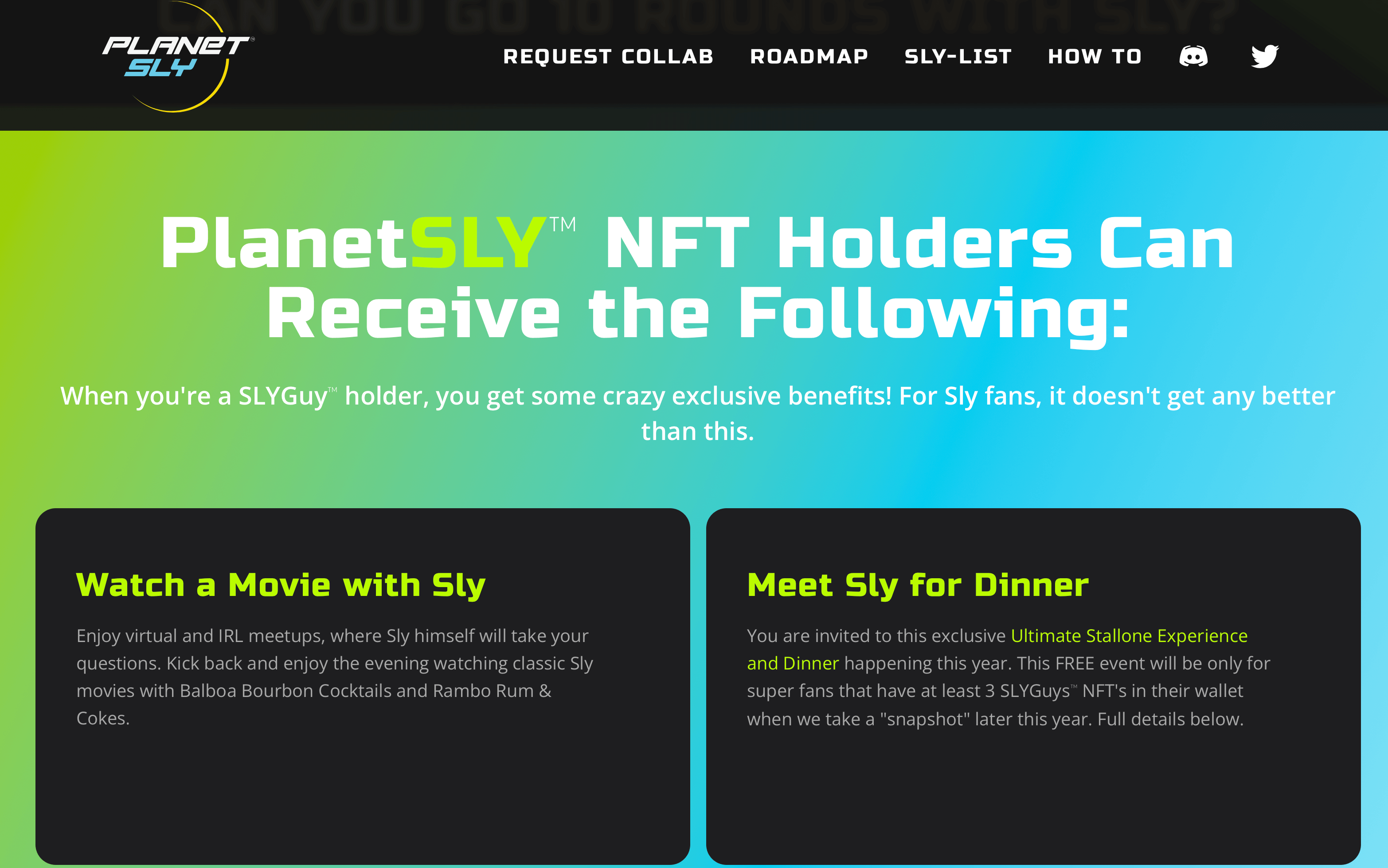
People who own CloneX avatar NFTs from RTFKT Studios—which designs next-gen sneakers and collectibles for the metaverse—recently received an airdrop from Nike, which now owns RTFKT. Right now, the NFT is an unopened 3D box, so it's raising speculation and building excitement among fans about what will be in it when it's opened.
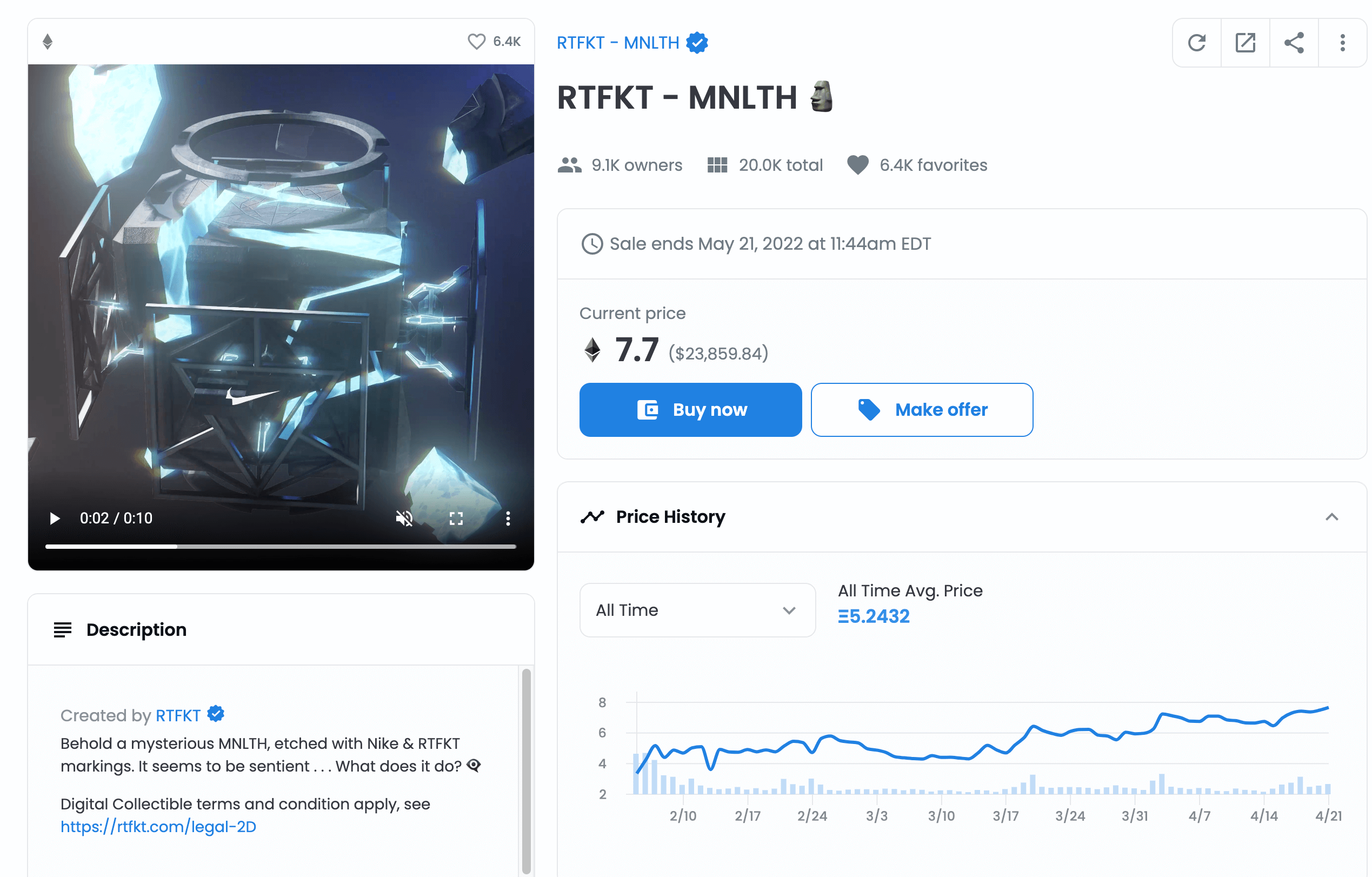
A utility for an NFT could also allow holders to earn cryptocurrency for staking their NFTs. If you're not familiar with the term staking, it means the owner of the NFTs is going to lock them in a lockbox, and while they're there, they'll continue earning crypto. It's a way for people to show they're committed to the project by having those NFTs locked away where they can't trade or use them. And holding them in that lockbox earns them more NFTs or more cryptocurrency.
An NFT project can also lead to physical goods for the owner of that NFT. For example, Gary Vaynerchuk's Gift Goats from VeeFriends came with the promise that holders would receive 18 physical gifts over 3 years. Now that's turned into 18 physical gifts and 18 NFTs.
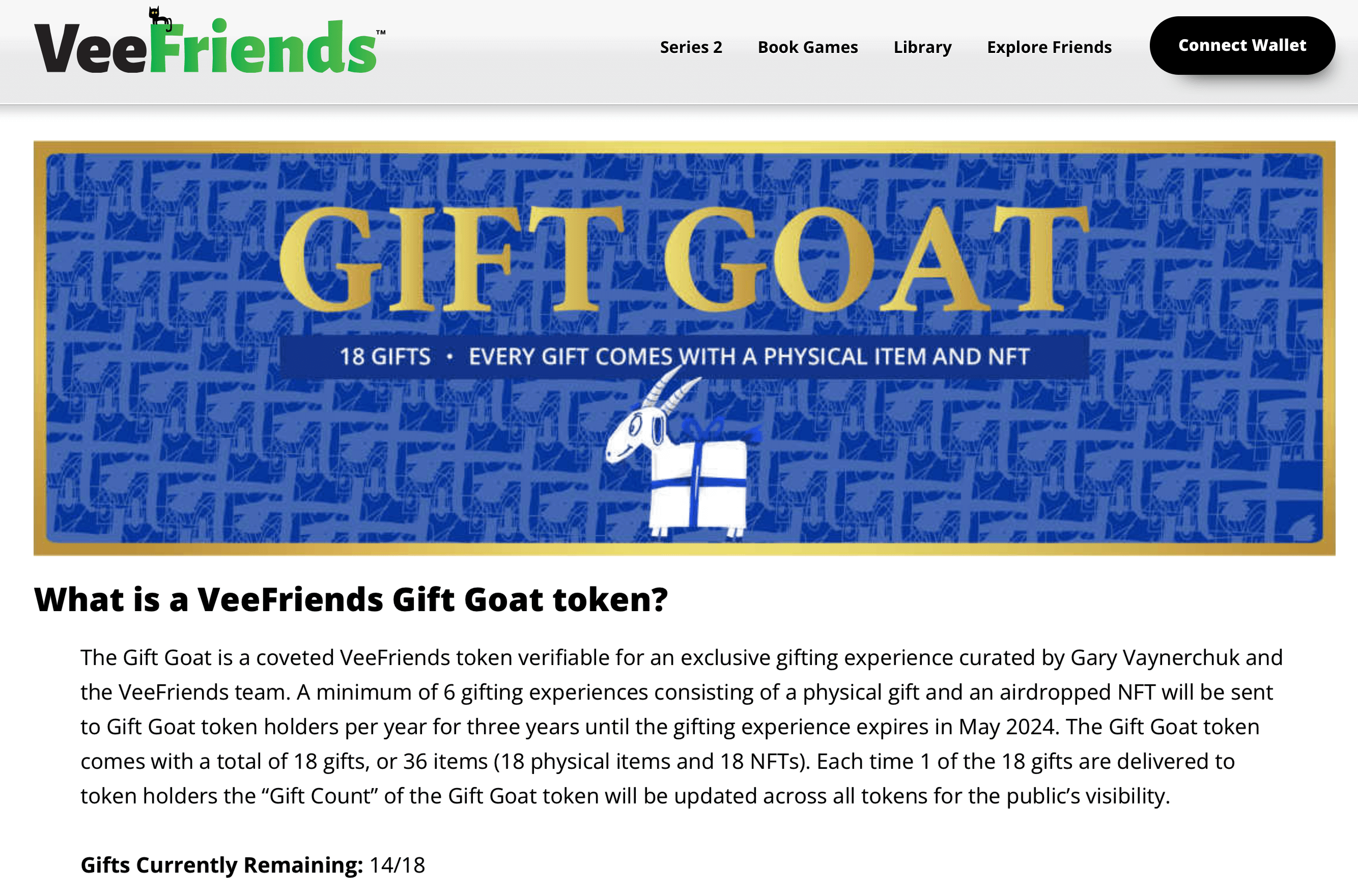
The utility behind any NFT is the core of how the community will value holding onto that NFT. If you're providing your community with opportunities and access to experiences they find valuable, the NFT will increase in value because more people will want to hold it.
#3: Share a Roadmap to Communicate Your Long-Term Plans
Once you've decided what your utility is going to be, your roadmap will explain how the utility will roll out. NFT roadmaps help communicate the long-term plans for your project to potential buyers and community members such as when you're doing reveals, when your mint date is, when people will be able to use your NFTs for the utilities, and so on.
Having a realistic and well-thought-out roadmap can help bring in more investors to your project, as well as keep current NFT holders engaged and excited about your future plans. It helps assure buyers that you're committed to the project; so much so that you've planned out the next several months of that project and the value they're going to receive for being a part of that project.
As you build out your roadmap, you don't need to include exact dates. In fact, you don't even have to know the exact months you'll plan for the next phase of your project. Your roadmap is a flexible, living document that lets your community know the future you've planned for your NFT project. With the right communication, you can make changes to your roadmap as needed.
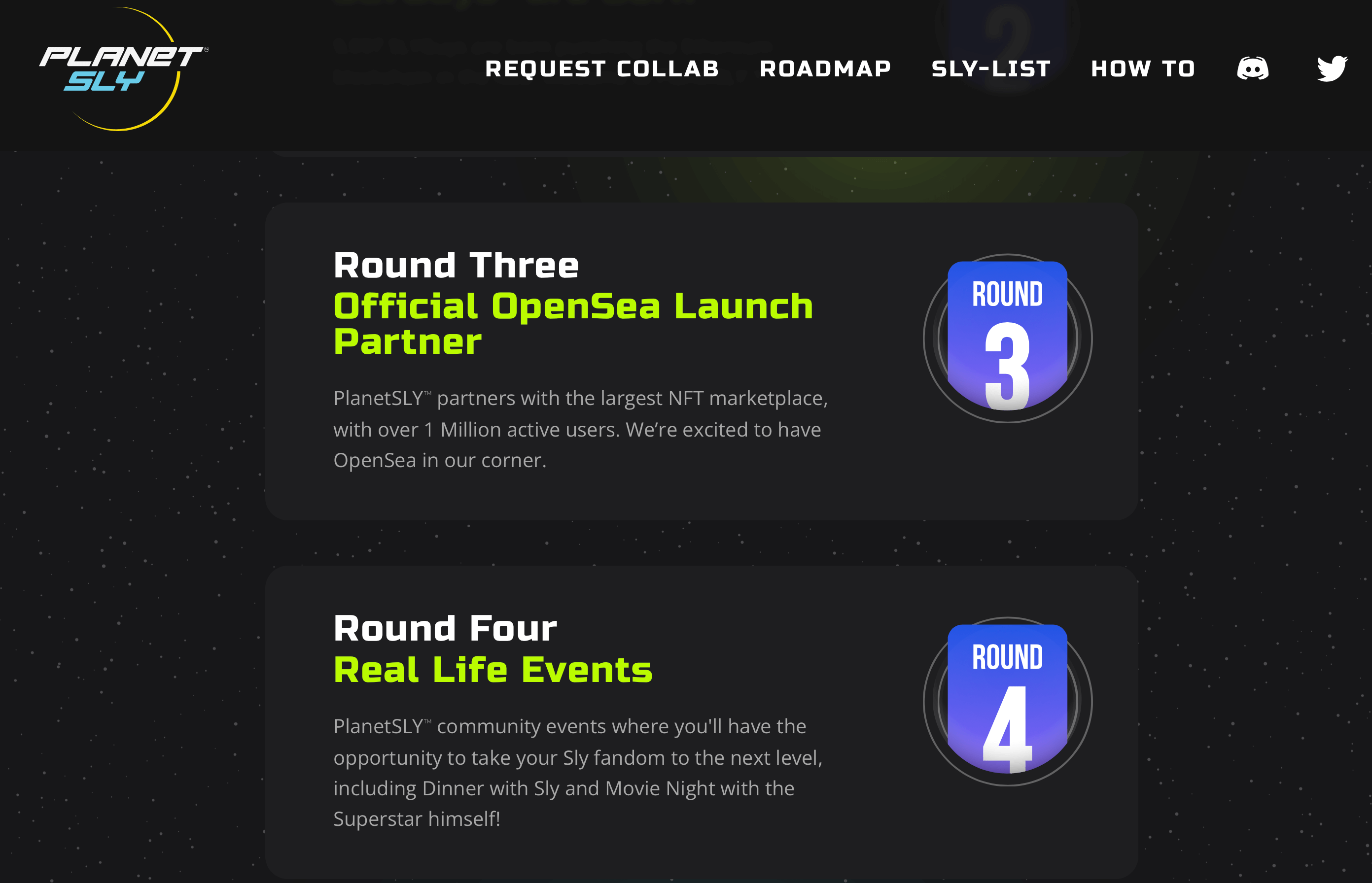
#4: Build an Engaged Community for Your Project
Having the community in place will help ensure the success of your NFT launch. They're the heart and soul of your NFT project.

Discover Proven Marketing Strategies and Tips
Want to go even deeper with your marketing? Check out the Social Media Marketing Podcast! Publishing weekly since 2012, the Social Media Marketing Podcast helps you navigate the constantly changing marketing jungle, with expert interviews from marketing pros.
But don’t let the name fool you. This show is about a lot more than just social media marketing. With over 600 episodes and millions of downloads each year, this show has been a trusted source for marketers for well over a decade.
Of course, this means you can't launch an NFT project until after you've already started building that community. For most businesses, that's going to mean using social media platforms to find an audience and build your community. You can then educate your community and bring them over to the platform where you're building the core of your NFT project.
For the SLYGuys NFT collection, Stallone posted a video on Instagram announcing the project to his fans and outlined some of the benefits of holding the NFTs, including real-life events with him. To help attract people genuinely interested in the project, people will need to audition to get whitelisted. They'll need to record a video of up to 60 seconds sharing why they love Sylvester Stallone. And they can improve their chances of getting whitelisted by participating in the community on Discord.
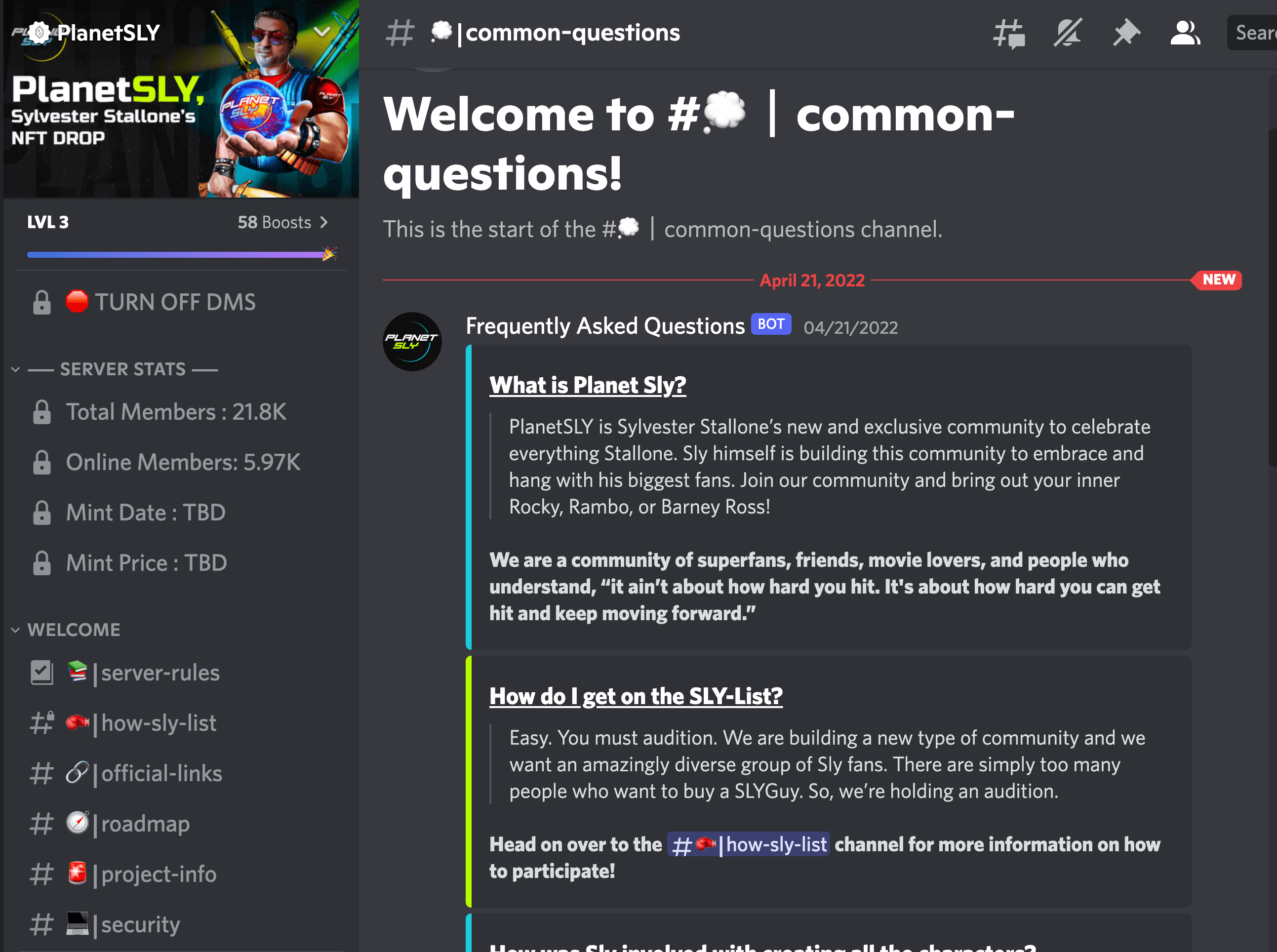
As you're setting out to build your community, remember that you don't need a large one to start. This boils down to that whole “1,000 true fans” philosophy: you just need a strong core audience that will build and evangelize the value of your community to start. The more they trust and evangelize you and your NFT project, the more other people will want to join in.
The key to building trust with your community is being transparent. Let them see your roadmap and communicate any changes you might have to make to it to keep their expectations in line with your capacity. Continue providing utility in the form of value and access to experiences that your community is after.
#5: Educate Your Audience About the NFT Space
Right now, a large part of marketing your NFT project is going to include educating your audience about Web3, the metaverse, and the NFT space. It's like when the internet was brand-new and consumers didn't know some of the basics we take for granted today like how to turn on a computer, swap disks to save a file, open a new file, and more.
NFTs are likely to become an ingrained part of life that no longer requires such a level of education. Just like now, no one asks about how the internet works anymore. They just turn on their computer, phone, or tablet and it's there. No one really asks about how the chips in their credit card work anymore, they just insert them into the machine to make a payment at a store.
NFTs are headed to the same level of mainstream adoption as these other technologies. But until this happens, your audience is going to have a lot of questions and the easier you can make it on them, the easier they will adopt your NFT project.
So think about some of the questions you had as a beginner in the NFT space. What were some of the things you were trying to research to get to where you are now? Make sure you answer questions that your audience is going to be asking before they can move forward with investing in your NFT project.
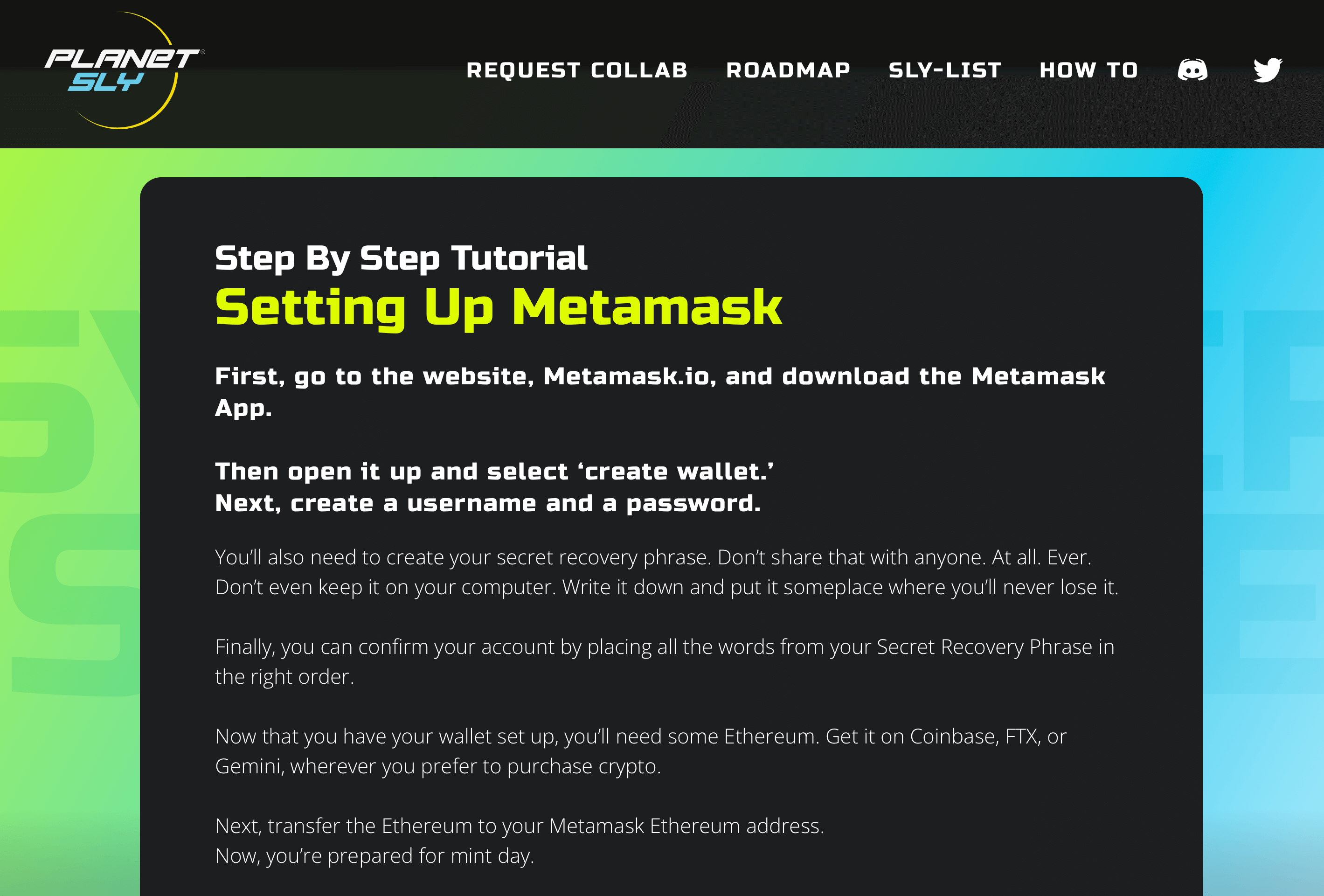
After a while, your NFT projects can market each other. In fact, there are some very successful projects where holding NFTs grants holders first access to mint on the next NFT project. So in that way, your community will be excited and incentivized to hold onto your NFTs to have the chance to mint a new NFT with your next collection, which will help build excitement for the second collection.
#6: Bring Your Project to Market
Finally, there's the financial aspect of any NFT project. NFTs can mint for any dollar amount you want. You can give them away for free or sell them for as little as a dollar. You'll have to decide what the right asking price is to bring your NFT project to market.
Part of deciding on your asking price is determining who you're targeting as your market. Are you targeting people with a lot of money to invest or are you looking to create a lower entry point so anybody can get in?
Thankfully, as the potential of NFTs has grown and more businesses have entered the NFT space, the tools to help put together and launch an NFT project have made it easier. What used to take hours or even days to develop and release can now be done in minutes.
One of the easiest ways to mint NFTs is on WAX. Anyone can go into the WAX blockchain and create a WAX Cloud Wallet for free in less than a minute. By using the tools at sites like AtomicHub, which is one of the primary sites where the WAX marketplace exists, anyone can mint a collection of NFTs. The tutorials are simple and easy to follow, lowering the barrier to access even more.
For Ethereum, OpenSea, Rarible, and Mintable all have tools that let you upload an image and create your NFT and then set a price.
Of course, even though it's as easy as signing up and uploading your NFT art to the blockchain, remember that the chances of you being able to sell your NFT that quickly are much smaller when you don't already have a community built up.
That doesn't mean that someone won't be checking the blockchain and happen to see your NFT and think that they need to have it right then and there. But just like anything else with marketing, you increase your chances of success by building your audience and customer base before releasing the product.
Joel Comm is a futurist and an NFT expert. He's the founder of Blockchain Heroes, co-host of the Bad Crypto Podcast, and host of the NiFTy Show. Find Joel on social media at @joelcomm.
Other Notes From This Episode
- Check out Sylvester Stallone's PlanetSLY, RTFKT, VeeFriends, WAX Cloud Wallet, OpenSea, Rarible, Mintable, NiftyGateway, AtomicHub, and SuperRare.
- Connect with Michael Stelzner at @Stelzner on Instagram.
- Watch the interviews on the Crypto Business YouTube channel.
Listen to the Podcast Now
This article is sourced from the Crypto Business podcast. Listen or subscribe below.
Where to subscribe: Apple Podcast | Google Podcasts | Spotify | Amazon Music | RSS
✋🏽 If you enjoyed this episode of the Crypto Business podcast, please head over to Apple Podcasts, leave a rating, write a review, and subscribe.
Disclaimer: The information provided on this website is provided solely for educational purposes and does not constitute any advice, including but not limited to, investment advice, trading advice or financial advice, and you should not treat any of the website's content as such. Social Media Examiner recommends that you independently research any information contained on this Website and that you speak with an investment professional before making any decision to purchase, trade, hold or sell cryptocurrency. Nothing herein should be treated as a recommendation to buy, sell or hold cryptocurrency. Social Media Examiner cannot guarantee the accuracy of any information listed on the website and is not responsible for any missing or wrong information. All information is provided as is and should be used at your own risk. Social Media Examiner disclaims all responsibility and liability for your use of any information found on the website.
Attention Agency Owners, Brand Marketers, and Consultants

Introducing the Marketing Agency Show–our newest podcast designed to explore the struggles of agency marketers.
Join show host and agency owner, Brooke Sellas, as she interviews agency marketers and digs deep into their biggest challenges. Explore topics like navigating rough economic times, leveraging AI, service diversification, client acquisition, and much more.
Just pull up your favorite podcast app, search for Marketing Agency Show and start listening. Or click the button below for more information.

